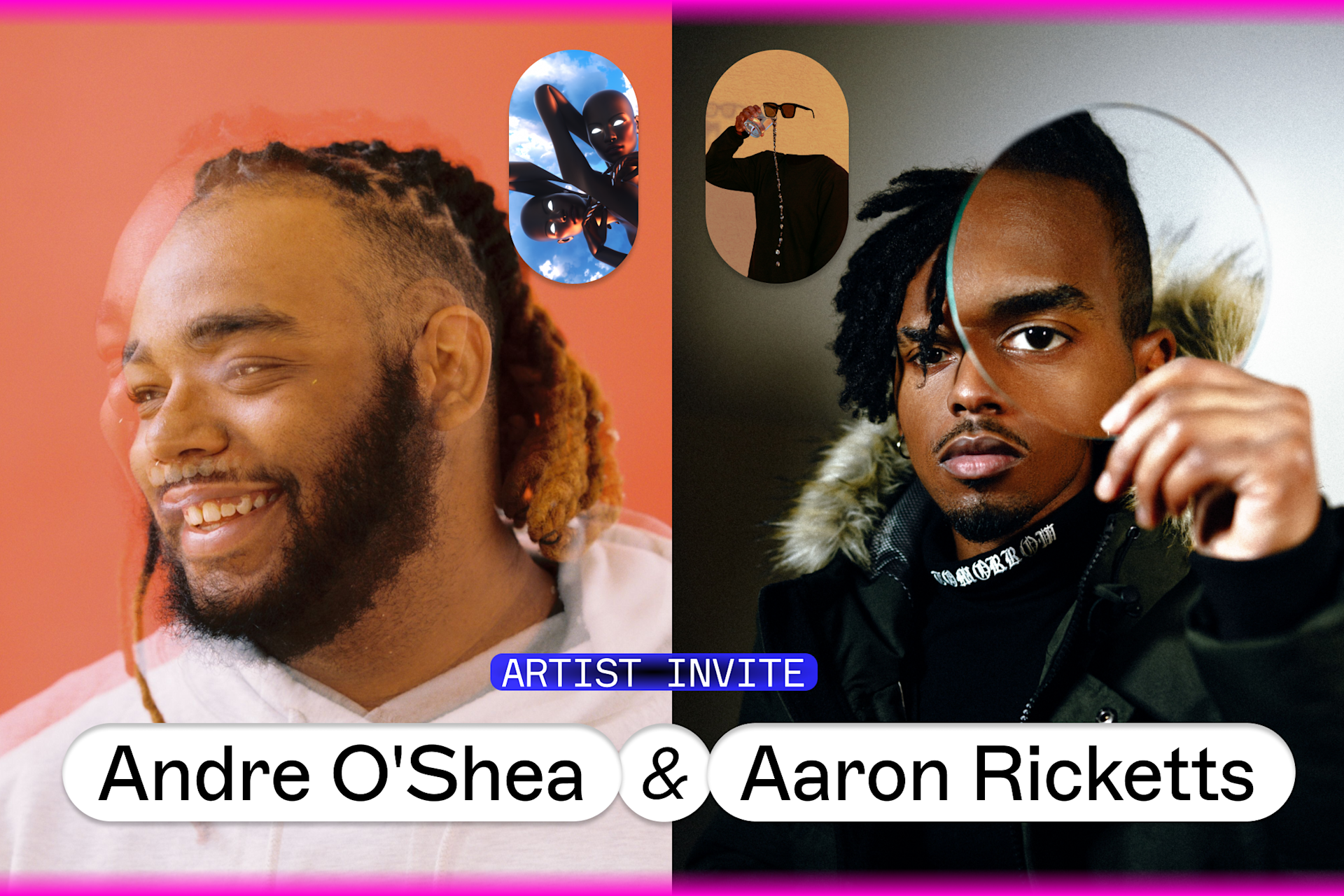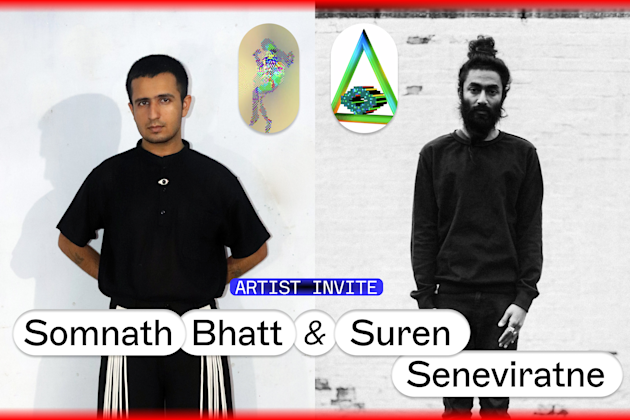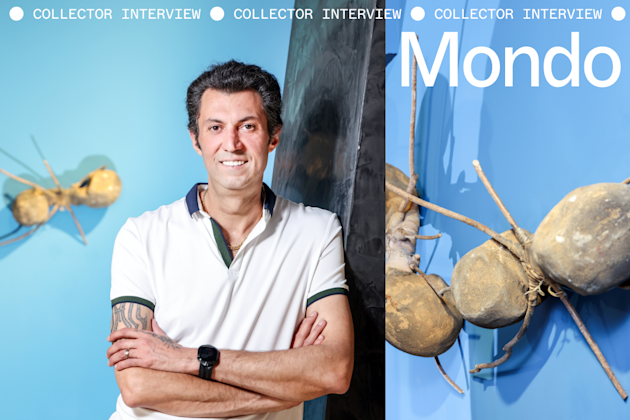Artist Invite: Andre O’Shea & Aaron Ricketts

Artist Invite is an ongoing series that connects the dots between creators on Foundation. When Andre O’Shea joined the Foundation community, he knew immediately that Aaron Ricketts was among the creators that he wanted to introduce to the world of NFTs. Andre’s work depicts other-worldly, multi-dimensional environments that often reflect his own feelings, experiences, and perceptions as an artist. Aaron’s surrealist use of photography and film similarly captures and amplifies the absurdities of daily life. After spending time with each of their individual practices, you begin to notice the nuances between them: one creates from an introspective point of view, while the other looks outward. A few months in, Andre has become a leading voice and community liaison at Black NFT Art, and both artists are finding new audiences for their work and hitting their strides in the crypto space.
The two navigated their way into friendship through the crossed wires of social media networks, and have admired each other’s work via the internet since 2013. Earlier this year, they were finally able to connect in person. Andre has long been enamored with the minimalist complexity in Aaron’s work, and appreciates his ability to express potent ideas with elegance. Reciprocally, Aaron looks to Andre’s work as a beacon of creative ingenuity that inspires others. For Artist Invite, the two talk to each other about working in their respective mediums, and share the lessons learned along their paths to becoming the artists they are today.
Aaron Ricketts: Why do you create surrealist art? Is there a purpose or deeper meaning that you’re trying to convey?
Andre O’Shea: The focus of my art is to break people out of the reality of our world. My work exists in split-second moments that feel like déjà vu. I do this because I want to inspire people to build a new future with the new technology we've been developing. Ironically enough, this is also why I love the NFT space so much. We can use these innovative technologies to help build a brighter future.
You’ve worked with Adult Swim, Vogue, and Netflix, to name a few. Why do you believe this is important as a Black artist?
Andre: I want people to see the possibilities. When I was growing up, and even as an adult at the beginning of my career, I looked up to artists that showed me the different possibilities of what an artist can be—and you're actually a part of that list Aaron. Working with some of the people I have worked with has given me the opportunity to set a tone for my community.
What have been your greatest lessons learned thus far in your career?
Andre: Easy—to live with accountability and intention. Accountability should be a guiding force in decision-making processes. When you are prepared to take accountability for your career, you realize how important living in the present moment is. When it comes to intention, I think that is about following a general, guiding principle for how you make your choices. On the path to becoming a full-time artist, you are presented with a lot of opportunities—some better than others—and accountability, plus intention, helps me understand what is best for me.
Andre O’Shea: Traditionally, when I see surrealist work, it favors maximalism—but you approach surrealism with a minimalist lens. How are you able to achieve this?
Aaron Ricketts: When it comes to my work, I like to describe it as “minimally complex.” This may seem like an oxymoron, but there’s a good reason for it. The concept of each work may be simple, however, there are usually a lot of details that go into the execution of creating each piece. For instance, a single, final piece could be a composite of over ten different images. This takes serious attention to detail, because each part has to fit cohesively so that I am able to seamlessly cover my “presence” in the final product.
You have a background in photography, which also seems unique for a surrealist artist. How were you able to find a natural synergy between your craft and medium?
Aaron: I believe I was able to do this easily because I was introduced to software, like Photoshop, before I started practicing photography. Although I picked up the two around the same time, photography was initially a means to an end. I know there are a lot of individuals who use stock images for their composites, and that there are moments when using them are unavoidable, however, a majority of the time, I only like to use images that I’ve captured myself. In my opinion, this makes my surrealist work believable to the untrained-eye. I am often looking to blur the lines between what’s real and what’s not.
You have had a lot of opportunities to work with Netflix, Converse, Adidas, and Rolling Loud. Has this changed your approach to creating personal work?
Aaron: It’s hard to say. If this has changed my approach to my personal work, it’s because I believe I operate on two different spectrums, both commercially and as an individual artist. Although, if I had to say, the answer would definitely be yes! After gaining experience from working on movie sets, or large-scale projects, it’s hard not to learn new techniques along the way. For instance, my knowledge and understanding of lighting is much better than it was early on in my career. This makes lighting my personal projects easier, which of course leads to a better end-result. I also work more intentionally and efficiently when executing my personal work. In this industry, time and effort are everything, and as a result, I am more attentive to everything at each stage of my creative process.
Read more

Artist Invite: Somnath Bhatt & Suren Seneviratne

Mondo on collecting as a way of life.
